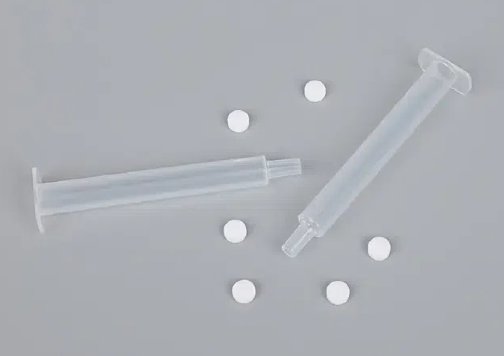close
Choose Your Site
Global
Social Media
Views: 0 Author: Site Editor Publish Time: 2025-05-20 Origin: Site








Have you ever wondered why some labs insist on using Pipette Tips Filter while others stick with non-filter tips? The choice between these two seemingly simple tools can dramatically impact your lab’s accuracy and contamination control. Choosing the wrong tip might lead to sample contamination or inconsistent results.
In this post, you’ll learn the key differences between filter pipette tips and non-filter tips. We will explore their advantages, limitations, and the best use cases for each. By the end, you’ll understand why many labs trust premium Pipette Tips Filter for critical applications, including those offered by Suzhou Kaihong Polymer Technology Co., Ltd.

Before diving into pros and cons, it’s important to clarify what these terms mean.
Pipette Tips Filter are pipette tips equipped with a small filter inside the tip’s upper part. This filter acts as a barrier to prevent aerosols, liquids, or contaminants from entering the pipette shaft.
Non-Filter Tips are standard pipette tips without any internal filter. They provide a direct liquid path from the sample to the pipette.
| Feature | Filter Pipette Tips | Non-Filter Tips |
|---|---|---|
| Aerosol barrier | Yes, blocks aerosol and liquid contamination | No, direct contact with pipette shaft |
| Cost | Higher due to added filter | Lower |
| Contamination risk | Significantly reduced | Higher, especially with viscous samples |
| Compatibility | Compatible with most pipettes | Compatible with most pipettes |
Pipette Tips Filter offer critical protection for sensitive applications. Here are some reasons why they are favored:
The built-in filter traps aerosols and prevents sample contamination. This is vital when working with PCR, RNA/DNA, or cell culture samples. Aerosols can carry contaminants deep into the pipette, risking cross-contamination.
By blocking liquid carryover, filter tips ensure that samples stay pure and uncontaminated. This improves reproducibility and reliability.
Filters stop liquid from entering the pipette shaft. This extends the lifespan of expensive pipette mechanisms and reduces maintenance costs.
In clinical settings, filter tips reduce the risk of contamination and infection. They meet stringent requirements for diagnostic accuracy.
High-quality filter tips fit snugly on most pipette brands and models. Suzhou Kaihong Polymer Technology’s Pipette Tips Filter offer excellent fit and consistent performance.
Non-filter tips also have their place. Here’s why some labs still use them:
Cost-effective for routine liquid handling where contamination is less critical.
Suitable for pipetting non-volatile, non-aerosol-forming liquids like buffers or water.
Often preferred for viscous or particulate samples because filters can clog or reduce flow.
No barrier against aerosol or liquid contamination.
Increased risk of sample and pipette contamination in sensitive assays.
Not recommended for PCR, molecular biology, or clinical diagnostics.
Suzhou Kaihong Polymer Technology Co., Ltd. delivers premium Pipette Tips Filter engineered for optimal performance:
Superior Material Quality: High-grade polymer ensures durability and chemical resistance.
Precision Manufacturing: Consistent tip size guarantees accurate volume delivery.
Reliable Filtration Efficiency: Filters effectively block aerosols and liquid contamination.
Wide Compatibility: Designed to fit standard single and multi-channel pipettes.
Sterility Options: Available in sterile and non-sterile versions to suit lab needs.
By choosing their Pipette Tips Filter, labs get reliable protection and precision, essential for today’s demanding scientific workflows.
| Aspect | Filter Tips | Non-Filter Tips |
|---|---|---|
| Contamination Risk | Very low due to filter barrier | Higher risk due to no barrier |
| Suitability | PCR, molecular biology, diagnostics | General liquid handling, viscous samples |
| Price | Higher | Lower |
| Pipette Protection | Excellent, prevents shaft damage | No protection |
| Flow Resistance | Slightly higher due to filter | Lower flow resistance |
A: Filter tips are ideal for sensitive samples. However, non-filter tips may be better for viscous or particulate liquids to avoid clogging.
A: High-quality filter tips, like those from Suzhou Kaihong Polymer Technology, maintain accuracy with minimal flow resistance.
A: Generally, filter tips are single-use to prevent contamination.
A: They block aerosols and liquids from entering the pipette shaft, reducing wear and maintenance needs.
Choosing the right pipette tip can make or break your experiment’s success. Pipette Tips Filter offer unmatched protection against contamination and extend pipette lifespan. For sensitive workflows like PCR, molecular biology, and clinical diagnostics, filter tips are indispensable.
Suzhou Kaihong Polymer Technology’s Pipette Tips Filter combine precision, durability, and superior filtration, helping labs maintain sample integrity and reliability. Investing in quality filter tips is a smart decision for any lab aiming for consistent, accurate results.
Ready to upgrade your lab’s pipetting tools? Consider Suzhou Kaihong Polymer Technology’s Pipette Tips Filter — the trusted choice for contamination control and precision.
A: They prevent aerosol and liquid contamination, protecting both samples and pipettes.
A: Most filter tips fit standard pipettes, but always check compatibility.
A: They are more cost-effective and suitable for non-sensitive liquid handling.
A: The difference is minimal and often outweighed by improved protection.
A: Store them in a clean, dry place, preferably sealed to maintain sterility.